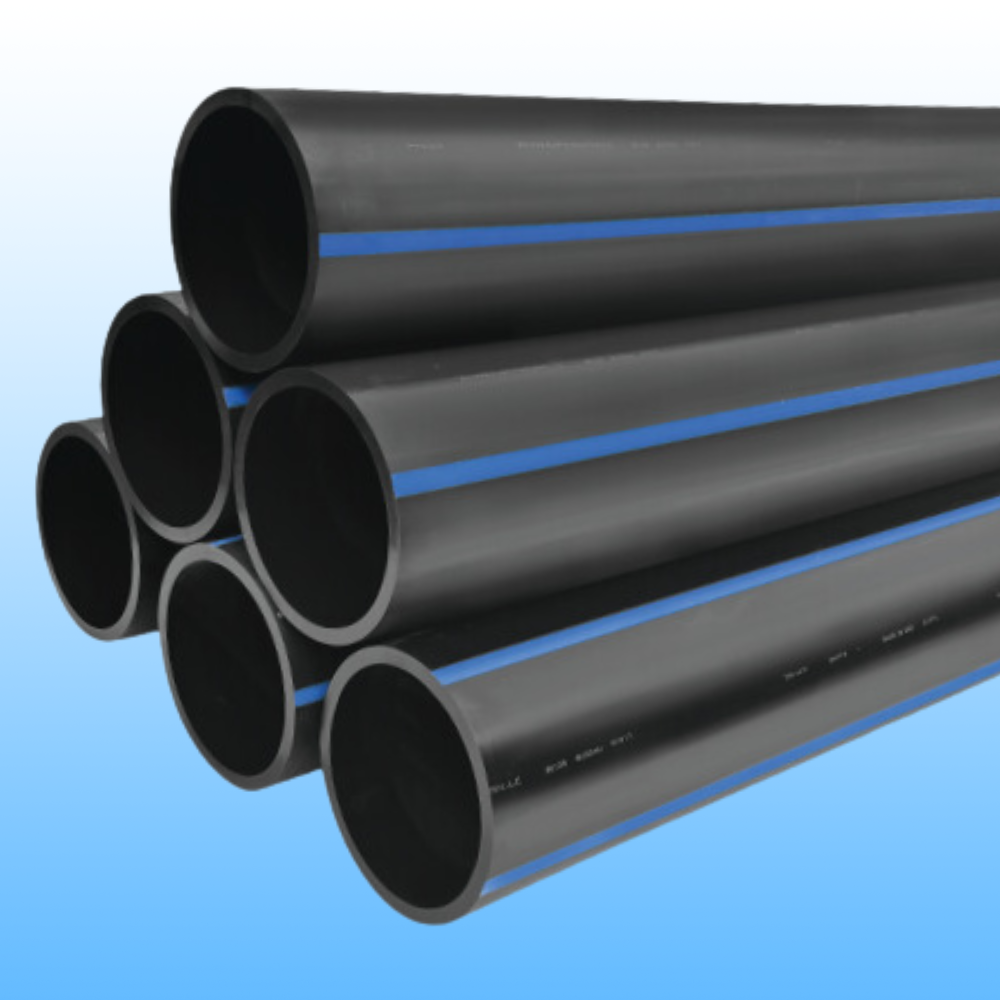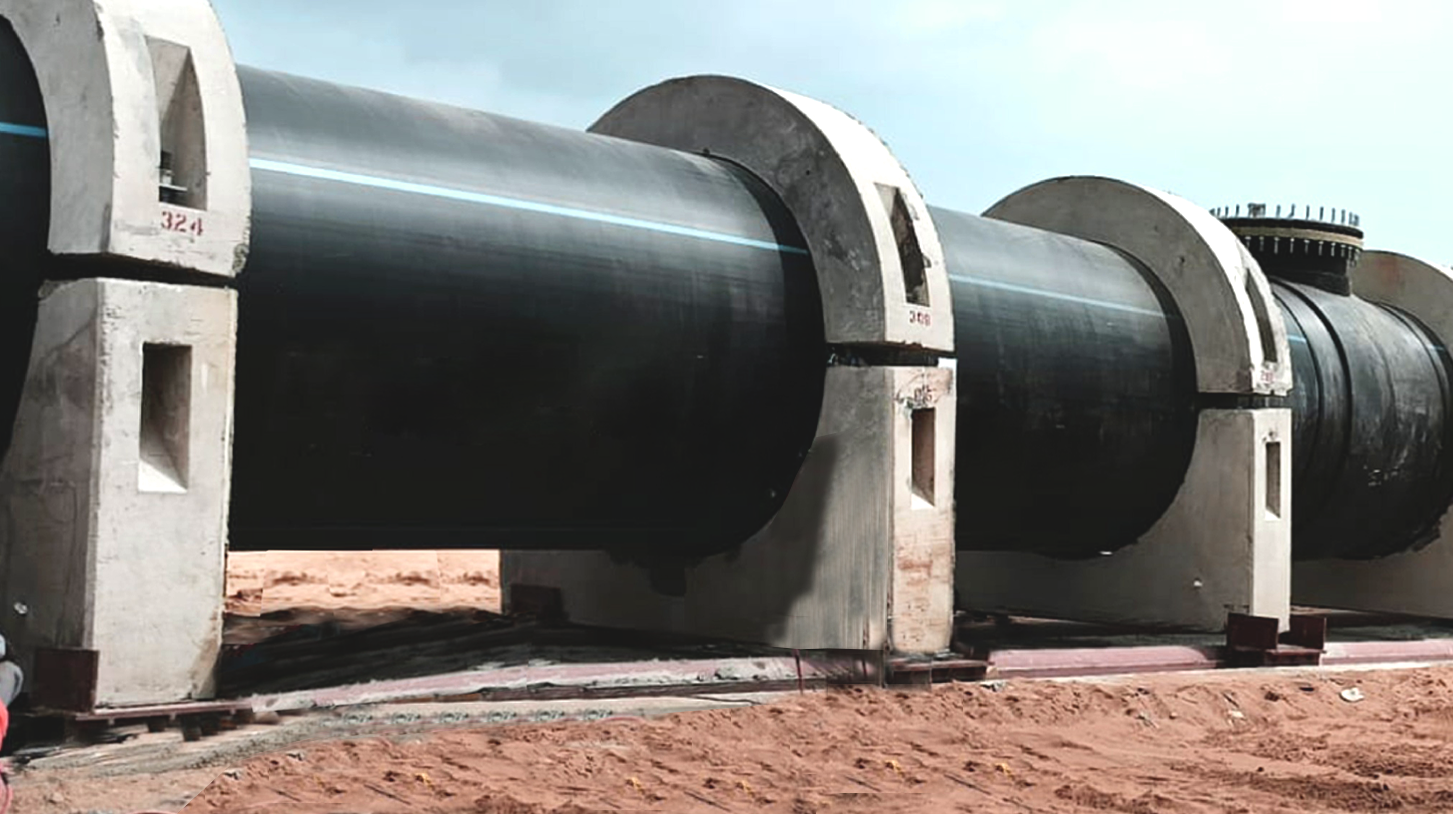The Definitive Handbook to Pipe Manufacturing Midland TX for Energy Projects
The Important Steps for Effective Installation of HDPE Pipeline in Your Following Job
Effective installation of HDPE pipe calls for careful preparation and implementation. Secret actions include reviewing job needs, preparing the site, and choosing correct joining methods. Each phase plays an essential function in making certain the stability and efficiency of the pipe. Understanding these crucial steps can considerably affect the overall success of the job - American Plastics HDPE Pipe Manufacturing. Nonetheless, the subtleties of each action may hold the secret to getting rid of usual challenges dealt with during installation
Understanding the Conveniences of HDPE Pipe
High-density polyethylene (HDPE) pipe offers numerous advantages that make it a preferred choice for numerous applications. Its high resistance to deterioration and chemicals guarantees sturdiness in demanding atmospheres, considerably extending the lifespan of installations. Additionally, HDPE's flexibility allows for easier installation, specifically in tough surfaces, as it can bend without breaking. The lightweight nature of HDPE pipeline streamlines transportation and handling, reducing labor prices throughout installment.
HDPE pipeline is recognized for its low rubbing coefficient, which boosts liquid flow and minimizes power usage. Its seamless building and construction minimizes the danger of leaks, adding to much better resource monitoring and environmental management. Furthermore, HDPE is recyclable, aligning with lasting methods and decreasing ecological impact. Generally, the combination of toughness, versatility, and eco-friendliness makes HDPE pipeline a remarkable option for a vast array of jobs, from water circulation to industrial applications.
Preparation Your HDPE Pipeline Installment
When planning a setup of HDPE pipe, mindful consideration of a number of crucial aspects is vital to protect an effective job. Initially, project supervisors must examine the specific demands of the pipe, consisting of the intended use, circulation rates, and environmental problems. Understanding these specifications will certainly direct the choice of ideal pipe dimensions and product quality.
Next, timelines must be developed, considering procurement routines and any type of prospective delays. Coordination with regional authorities for authorizations and governing conformity is also essential. Additionally, an in-depth spending plan should be prepared, encompassing all costs related to materials, labor, and machinery.
It is crucial to involve a certified group experienced in HDPE pipeline setup. Their competence will certainly assist alleviate threats, warranty adherence to sector requirements, and inevitably add to the task's success. Comprehensive planning prepares for a smooth installation procedure and durable efficiency of the HDPE piping system.
Preparing the Website for Setup
Appropriate site preparation is vital for the successful installation of HDPE pipeline. Prior to setup begins, the site needs to be extensively examined to guarantee it meets all essential needs. This consists of surveying the ground for existing structures, energies, and prospective risks that could restrain the setup procedure.

Appropriate elevation and positioning need to be developed to keep a regular slope for water drainage objectives. Correct water drainage around the installment website is likewise important to avoid water build-up, which can cause issues down the line.
Strategies for Signing Up With HDPE Water Lines
Achieving a trusted connection between HDPE pipelines is essential for ensuring the honesty and long life of the installment. Different methods exist for joining these pipelines, each matched for different task needs. Combination welding is one of the most usual techniques, using heat to bond the pipe ends with each other, producing a seamless and durable link. This method can be additional categorized right into outlet fusion and butt blend, depending upon the pipe arrangements.
Mechanical fittings are an additional choice, utilizing clamps and threaded adapters to sign up with sections of HDPE pipeline. While generally faster to install, they might require added maintenance over time. Electrofusion is a customized method that involves making use of electric existing to warm and fuse the pipelines with specially designed installations, making sure a strong bond. Picking the suitable signing up with method is crucial, as it directly affects the total performance and integrity of the HDPE piping system in the intended application.
Checking and Evaluation of Installed Piping
The screening and evaluation of mounted HDPE pipes are vital to guaranteeing their performance and longevity. This process encompasses aesthetic evaluation strategies, pressure testing approaches, and leak detection procedures to determine prospective concerns. By employing these techniques, specialists can validate the integrity of the setup prior to it is taken into usage.
Aesthetic Evaluation Techniques
Utilizing reliable aesthetic examination strategies is vital for guaranteeing the stability of mounted HDPE pipelines. Inspectors need to systematically take a look at all noticeable areas of the pipe to determine any kind of indicators of damages, imbalance, or improper installation. Key indicators to examine include joint stability, surface irregularities, and connections. Inspectors may make use of tools such as amplifying glasses or electronic cameras to boost presence and information. It is necessary to inspect for indications of environmental anxiety, such as distorting or extreme bending, which could compromise performance. Constant paperwork of findings enables tracking changes with time and aids overview needed fixings. By sticking to recognized visual inspection protocols, task groups can notably reduce the threat of future failings and ensure long-term integrity of the piping system.
Stress Evaluating Techniques
Visual examination acts as a preliminary action, yet it is not adequate by itself to guarantee the performance of set up HDPE pipes. Stress screening methods are essential for ensuring the integrity of these systems. Typically, hydrostatic screening is employed, where the pipelines are loaded with water and subjected to stress levels over the designated operating pressure. This technique helps recognize weak points or prospective leakages. Pneumatically-driven testing can additionally be used, although it lugs higher threats because of the compressibility of air. No matter of the technique picked, adhering to sector standards and safety and security protocols is essential. After conducting stress tests, thorough paperwork is necessary to verify the outcomes and verify that the installment satisfies all functional needs before continuing to the next phase of the project.

Leak Discovery Procedures
Exactly how can one assure that installed HDPE pipes are devoid of leaks? Efficient leak discovery procedures are important to protect the honesty of the system. Aesthetic examinations must be executed, looking for indicators of water accumulation or soil erosion around pipe joints. Following this, pressure screening can confirm the system's strength. A common technique is the hydrostatic examination, where water is presented under stress, monitoring for decreases that suggest prospective leaks. Furthermore, advanced modern technologies, such as acoustic sensing units or infrared thermography, can spot leakages that might not be noticeable. Normal surveillance and upkeep more add to the durability of HDPE pipelines, guaranteeing they stay leak-free throughout their operational life expectancy. Proper documentation of these procedures is vital for conformity and future referral.
Upkeep Tips for Long-Term Performance
To guarantee the long life of HDPE pipelines, establishing a regular examination timetable is important. This aggressive approach allows for the very early discovery of potential problems, minimizing pricey repair work. Additionally, implementing correct cleaning techniques will certainly help keep peak performance and protect against build-up that can impact functionality.
Normal Evaluation Set Up
HDPE pipelines are known for their longevity and resistance to corrosion, developing a regular assessment schedule is necessary for ensuring their long-lasting efficiency. Routine assessments aid identify possible issues such as leaks, joint stability, and ecological impacts that might influence more info the pipeline's functionality. It is advised that inspections happen a minimum of biannually, or more often in environments with severe problems. American Plastics HDPE Pipe for Oilfield. Throughout these analyses, visual checks should be carried out to discover indicators of wear or damages. Additionally, using technology such as ultrasonic testing can supply additional understandings right into the pipeline's problem. By implementing a structured evaluation routine, job managers can proactively attend to issues, consequently prolonging the life expectancy of HDPE pipes and preserving system effectiveness
Correct Cleaning Techniques
Correct cleansing strategies play an essential role in maintaining the long-term efficiency of HDPE pipelines. Normal cleaning avoids the buildup of debris, debris, and biofilm, which can cause obstructions and minimized flow efficiency. Operators should employ approaches such as high-pressure water jetting or foam cleansing to successfully get rid of impurities without harming the pipeline surface. It is crucial to avoid utilizing harsh chemicals that might degrade HDPE product. In addition, scheduled upkeep checks need to include visual inspections for any kind of indications of wear or damage. Correctly educated workers should accomplish these cleansing processes, making certain compliance with safety and security and environmental laws. By carrying out these practices, the life-span of HDPE pipes can be greatly expanded, making sure optimal efficiency throughout their operational life.
Regularly Asked Questions
What Are the Ecological Impacts of HDPE Pipe Production?
The ecological influences of HDPE pipe manufacturing consist of greenhouse gas discharges, energy intake during production, potential plastic contamination, and obstacles in recycling. HDPE's longevity and resistance to rust can minimize some environmental worries.
How Does HDPE Pipe Compare to Various Other Products?

What Tools Are Needed for HDPE Pipeline Installment?
Vital devices for HDPE pipeline installation include a combination device, pipeline cutters, shovels, determining tape, and safety and security gear. Proper devices assurances effective, secure handling and installment, adding to the project's general success and stability.
Exist Any Kind Of Details Rules for HDPE Pipeline Setup?
Details laws for HDPE pipe installation vary by region, frequently regulated by regional, state, or federal codes. Compliance with these policies assurances security, environmental management, and performance, making adherence vital for effective job end results.
Can HDPE Water Lines Be Recycled After Usage?
Yes, HDPE pipelines can be recycled after usage. Their thermoplastic nature enables reprocessing, making them appropriate for recycling into brand-new items. This sustainability facet adds to ecological preservation and advertises circular economic situation methods in building.